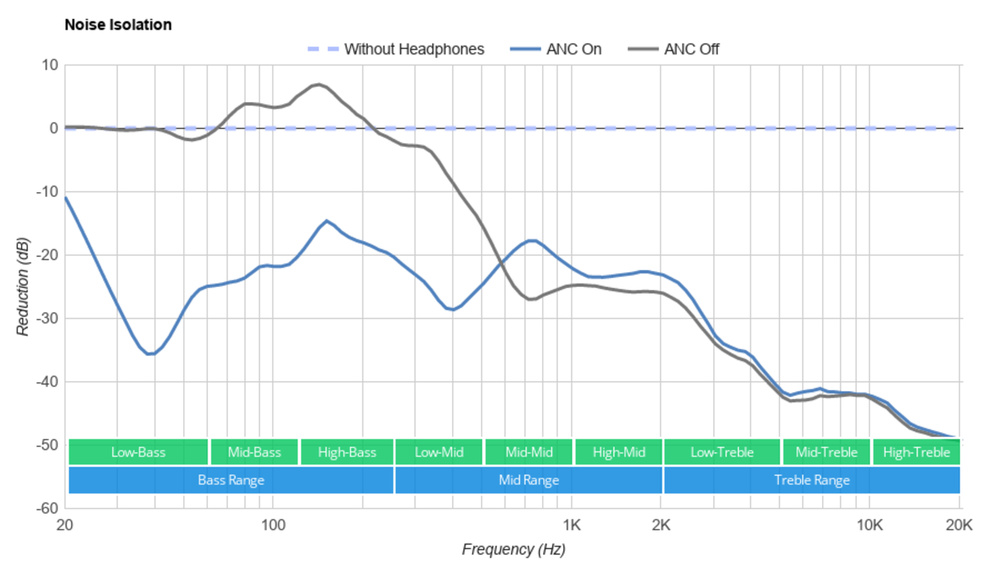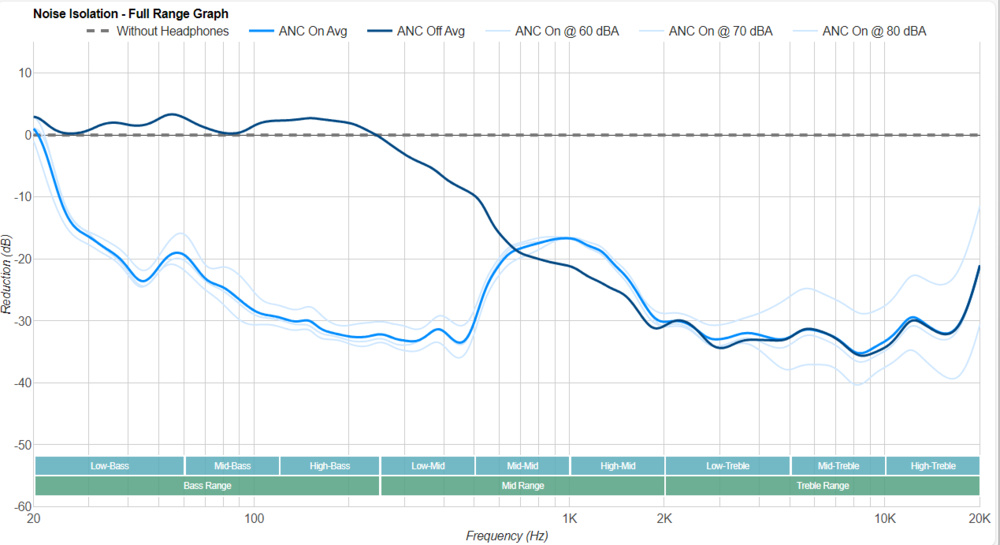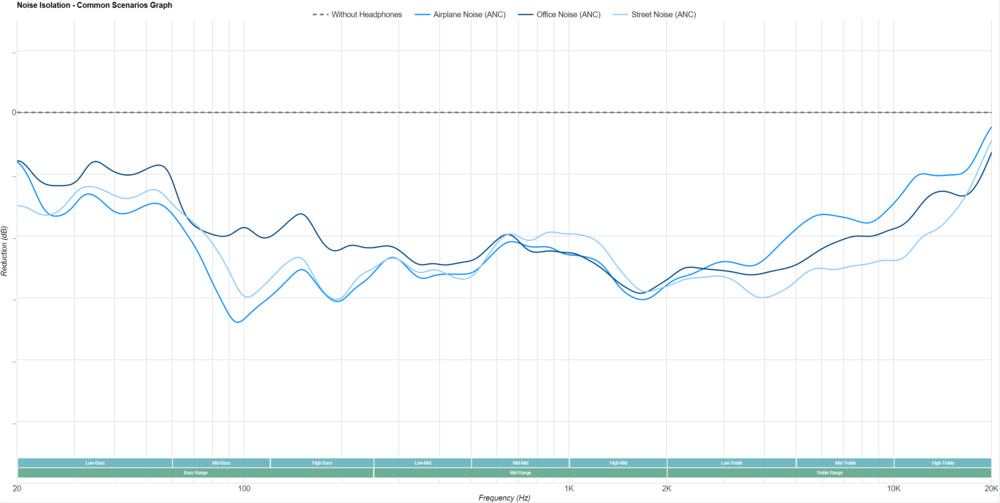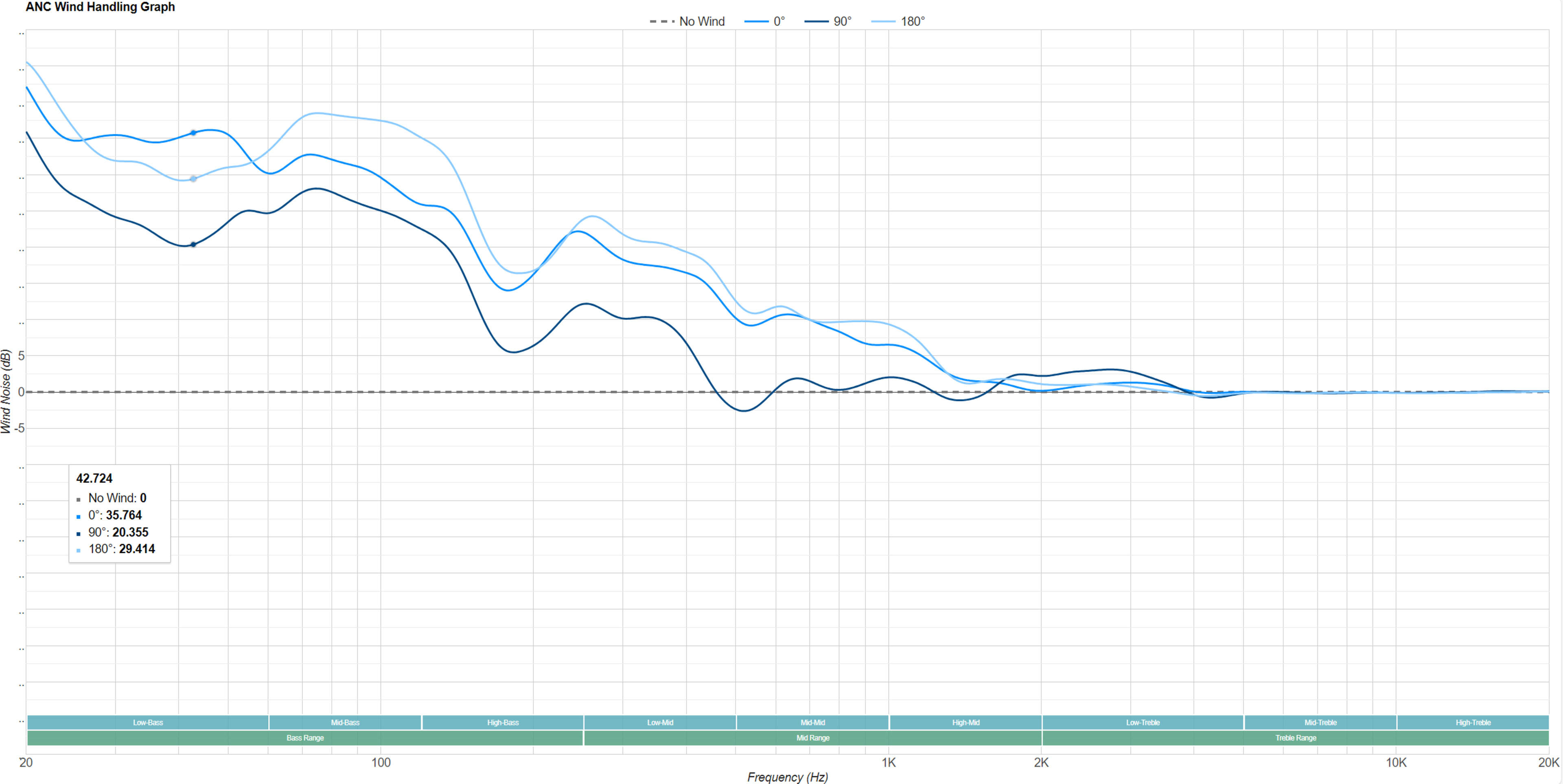- Table of Contents
- Intro
- What's Changed?
- New Tests
- Let Us Know What You Think!
- Completed Updates
- Comments
Test Bench 1.7
Changelog
See the previous 1.6 changelog.
See the next 1.8 changelog.
What's Changed?
We've expanded Noise Isolation to include more of a variety of sounds and scenarios. We've kept our original measurements for bass, mid, and treble attenuation, but now you can see and hear the differences in performance when it comes to scenarios like the office, wind noise, or voices.
This page will give you an overview of what's been updated so that you can find the right headphones for your needs. The following test groups have changed:
|
Test Group |
Description |
|
Noise Isolation - Full Range (previously called Noise Isolation) |
|
|
Noise Isolation - Common Scenarios (New!) |
|
|
Noise Isolation - Voice Handling (New!) |
|
|
ANC Wind Handling (New!) |
|
New Tests
Noise Isolation - Full Range (previously called Noise Isolation)
In the past, we tested noise isolation using a sine sweep. However, we've replaced this signal with pink noise. This change especially impacts headphones with an adaptive ANC system as they now have the time to adapt to our test signal to attenuate it, leading to more accurate results. We've also added the responses of three passes at different volumes (60 dB, 70 dB, and 80 dB) into our graphs so you have a better idea of how the headphones perform overall.
Here's a before and after comparison of our noise isolation graph using the Sony WH-1000XM4 Wireless.
If you're looking for headphones with high noise isolation in our full range test, you can look at this table. It has all of the headphones we've tested on this test bench, sorted by this test's performance.
Noise Isolation - Common Scenarios
While results generated from pink noise help us understand overall noise isolation performance, it's unlikely that you'll be hearing this noise day-to-day. A new addition to our methodology is Noise Isolation - Common Scenarios, which provides more true-to-life examples of noise to help you with your own uses. These audio recordings are created by the European Telecommunications Standards Institute (ETSI) as part of their organization's background noise database. We've selected three different scenarios, of which you can hear the reference samples below:
These common scenarios can help you see how ANC works in more dynamic environments. If the headphones have ANC, we'll conduct this test with ANC enabled. If there's no ANC, then this test is done passively. You'll find below raw recordings from the AKG N700NC M2 Wireless. Remember that you may need to raise your device's volume for the most accurate playback since the recordings are quite quiet.
If you're looking for a list of headphones that can tackle a specific scenario, you'll want to check out these tables for airplane, office, and street noise. We've already sorted them by noise attenuation, so you can quickly see which headphones give you the best performance per scenario.
Noise Isolation - Voice Handling
This test includes four different voice recordings (two male and two female) so that you can hear how well the headphones can isolate you from speech. These audio recordings are sourced from Peter Kabal's Telecommunications & Signal Processing Laboratory Speech Database at McGill University. You can hear the following reference samples below:
This test isn't scored but gives you a better idea of real-life performance. Below are four raw recordings from the Bose QuietComfort Ultra Earbuds Truly Wireless. Like the previous test, remember that you may need to raise your device's volume for the most accurate playback since the recordings aren't very loud.
ANC Wind Handling
If a pair of headphones have ANC, we'll also see how they perform when it comes to handling wind noise. Unlike previous sounds, which are from an external source, wind noise comes from how wind interacts with the headphones as it passes over the ANC microphones. It's also dynamic, as the wind angle can impact wind noise volume, so we assess wind handling at three different angles. This test isn't scored either.
This test only applies to headphones with ANC. If headphones have an ANC mode that specifically tackles wind noise, we'll also test this mode as it could impact the overall ANC attenuation. Below is a raw recording from the Sony WF-1000XM5 Truly Wireless. They lack a wind reduction feature. You may need to raise your device's volume for the most accurate playback, as the recordings aren't very loud.
Let Us Know What You Think!
You play an important part in what we do! Please let us know if you have feedback (whether it's something you want us to investigate or add to our tests). All comments help us improve what we do!
77 Headphones Updated
We have retested popular models. The test results for the following models have been converted to the new testing methodology. However, the text might be inconsistent with the new results.
- AIAIAI TMA-2 DJ
- AKG N700NC M2 Wireless
- Anker Soundcore Liberty 4 NC Truly Wireless
- Anker Soundcore Life Q30 Wireless
- Anker Soundcore P25i/P20i True Wireless
- Anker Soundcore Space A40 Truly Wireless
- Anker Soundcore Space Q45 Wireless
- Apple AirPods (3rd generation) Truly Wireless
- Apple AirPods Max Wireless
- Apple AirPods Pro (2nd generation) Truly Wireless
- Astro A40 TR Headset + MixAmp Pro 2019
- Astro A50 Gen 4 Wireless 2019
- Astro A50 X Wireless
- Audeze MM-100
- Audeze Maxwell Wireless
- Audio-Technica ATH-M50x
- Bang & Olufsen Beoplay H95 Wireless
- Beats Studio Pro Wireless
- Beyerdynamic DT 770 PRO
- Beyerdynamic DT 990 PRO
- Beyerdynamic MMX 300 (2nd Generation)
- Bose 700 Headphones Wireless
- Bose QuietComfort 45/QC45 Wireless
- Bose QuietComfort Earbuds II Truly Wireless
- Bose QuietComfort Headphones Wireless
- Bose QuietComfort Ultra Earbuds Truly Wireless
- Bose QuietComfort Ultra Headphones Wireless
- Bose Ultra Open Earbuds Truly Wireless
- Bowers & Wilkins Px7 S2 Wireless
- Bowers & Wilkins Px8 Wireless
- Corsair VIRTUOSO PRO
- Creative Aurvana Ace 2 True Wireless
- Devialet Gemini II True Wireless
- Drop + Sennheiser/EPOS PC38X
- Focal Bathys Wireless
- Google Pixel Buds Pro Truly Wireless
- HiFiMan Arya Stealth Magnet Version
- HiFiMan Edition XS
- HiFiMan Sundara 2020
- HyperX Cloud III Wireless
- JBL Tune 760NC Wireless
- JBL Tune Buds True Wireless
- JBL Vibe Beam True Wireless
- JBL Vibe Buds True Wireless
- Jabra Elite 10 True Wireless
- Jabra Elite 8 Active True Wireless
- Logitech G PRO X 2 LIGHTSPEED Wireless
- Logitech G535 LIGHTSPEED Wireless
- Pioneer DJ HDJ-CUE1BT Wireless
- Razer BlackShark V2 HyperSpeed Wireless
- Samsung Galaxy Buds FE Truly Wireless
- Samsung Galaxy Buds2 Pro True Wireless
- Sennheiser ACCENTUM Wireless
- Sennheiser HD 25
- Sennheiser HD 490 PRO
- Sennheiser HD 560S
- Sennheiser HD 600
- Sennheiser HD 800 S
- Sennheiser MOMENTUM 4 Wireless
- Sennheiser MOMENTUM True Wireless 3
- Shure AONIC 50 Gen 2 Wireless
- Skullcandy Dime 3 True Wireless
- Sony INZONE Buds Truly Wireless
- Sony LinkBuds S Truly Wireless
- Sony PULSE Elite Wireless
- Sony PULSE Explore Truly Wireless
- Sony WF-1000XM5 Truly Wireless
- Sony WH-1000XM4 Wireless
- Sony WH-1000XM5 Wireless
- Sony WH-CH720N Wireless
- Sony WH-XB910N Wireless
- SteelSeries Arctis Nova 7 Wireless [7, 7P, 7X]
- SteelSeries Arctis Nova Pro
- SteelSeries Arctis Nova Pro Wireless [PC, PS, Xbox]
- SteelSeries Arctis Pro Wireless
- TRUTHEAR x Crinacle ZERO
- V-MODA Crossfade 3 Wireless



